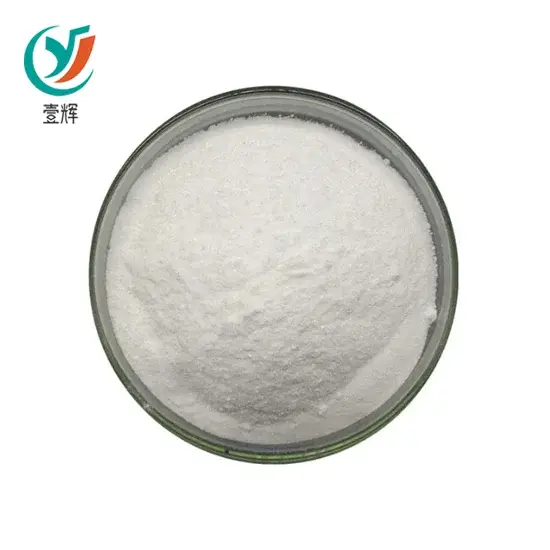What Is A Example Inhibitor?
2024-05-06 10:09:45
Introduction
Inhibitors are substances that are capable of slowing down or preventing the activity of enzymes or other biological processes. They play a critical role in regulating various physiological and pathophysiological processes in the human body. There exist many different types of inhibitors, including competitive, non-competitive, uncompetitive, and mixed inhibitors. In this article, we will discuss examples of inhibitors, focusing on their structure, function, and significance in different biological processes.
Competitive Inhibitors
Competitive inhibitors are molecules that bind to the active site of an enzyme to block its function. They compete with the substrate for the enzyme’s active site, preventing the substrate from binding and being converted into the enzyme’s product. This type of inhibition is reversible and can be overcome by increasing the substrate concentration.
The classic example of a competitive inhibitor is cyanide, which binds to the active site of cytochrome c oxidase, a key enzyme in the electron transport chain. Cyanide effectively blocks the enzyme’s ability to transfer electrons to oxygen, resulting in the rapid onset of severe metabolic acidosis and death.
Another example of a competitive inhibitor is statins, a group of drugs commonly used to lower cholesterol levels in the bloodstream. Statins bind to the active site of the enzyme HMG-CoA reductase, which is involved in cholesterol biosynthesis. By blocking the enzyme’s activity, statins reduce the amount of cholesterol produced by the liver, leading to decreased levels of low-density lipoprotein (LDL) cholesterol in the circulation.

Non-Competitive Inhibitors
Non-competitive inhibitors are molecules that bind to the enzyme at a site other than the active site, causing a conformational change that alters the enzyme’s activity. Unlike competitive inhibitors, non-competitive inhibitors do not compete with the substrate for binding to the enzyme, and increasing the substrate concentration may not overcome their effect.
An example of a non-competitive inhibitor is aspirin, a common painkiller and anti-inflammatory drug. Aspirin irreversibly binds to the enzyme cyclooxygenase (COX), which is involved in the production of prostaglandins, a family of lipid molecules that play a key role in inflammation and pain. By inhibiting COX activity, aspirin reduces inflammation and pain but may also cause unwanted side effects such as gastrointestinal bleeding.
Another example of a non-competitive inhibitor is organophosphate pesticides, which are used to control pests in agriculture and public health. Organophosphates irreversibly bind to the enzyme acetylcholinesterase, which is involved in the breakdown of the neurotransmitter acetylcholine. By inhibiting acetylcholinesterase activity, organophosphates lead to an accumulation of acetylcholine in nerve synapses, causing overstimulation and eventually paralysis.
Uncompetitive Inhibitors
Uncompetitive inhibitors are molecules that bind to the enzyme-substrate complex but not to the free enzyme or the free substrate. They reduce the enzyme’s activity by stabilizing the complex, thereby slowing down the rate of product formation.
An example of an uncompetitive inhibitor is spermine, a polyamine molecule found in many biological fluids. Spermine binds to the DNA polymerase III holoenzyme, which is involved in DNA replication in bacteria. By binding to the enzyme-substrate complex, spermine reduces the rate of DNA synthesis, leading to decreased bacterial growth and proliferation.
Another example of an uncompetitive inhibitor is lithium, a drug commonly used to treat bipolar disorder. Lithium inhibits the activity of inositol monophosphatase, an enzyme involved in the phosphatidylinositol signaling pathway. By reducing the synthesis of inositol, a key signaling molecule, lithium alters the balance of neurotransmitters in the brain, leading to its therapeutic effects.
Mixed Inhibitors
Mixed inhibitors are molecules that bind to both the enzyme and the enzyme-substrate complex, but with different affinities. They can function as either competitive or non-competitive inhibitors, depending on the concentration of the substrate and the inhibitor.
An example of a mixed inhibitor is methotrexate, a drug commonly used to treat cancer and autoimmune diseases. Methotrexate binds to dihydrofolate reductase, an enzyme involved in the synthesis of nucleotides and amino acids. By inhibiting the enzyme’s activity, methotrexate reduces the rate of cell division and metabolism, leading to its therapeutic effects. Methotrexate can act as both a competitive and non-competitive inhibitor, depending on the concentration of the substrate and the inhibitor.
Conclusion
Inhibitors play a critical role in regulating various biological processes in the human body. They can be used as therapeutic agents to treat diseases such as cancer, autoimmune disorders, and cardiovascular disease. Examples of inhibitors include cyanide, statins, aspirin, organophosphate pesticides, spermine, lithium, and methotrexate. Each type of inhibitor has a unique structure and mechanism of action, and understanding their properties is essential for the development of new drugs and therapies.
Send Inquiry
Related Industry Knowledge
- Exploring the efficacity of Fulvestrant API
- Vitamin K2 MK4: The Guardian Of Human Bone And Cardiovascular Health!
- Is Sodium Selenite Safe For Humans?
- Is Ergothioneine a Key Player in Promoting Skin Health and Radiance?
- How does mitomycin C work?
- Is brimonidine tartrate safe for eyes?
- Is Amlexanox Safe for Children to Use?
- Is Amlexanox Effective for Treating Eczema?
- Is Ascorbyl Palmitate Safe?
- What Does Ashwagandha Extract Do?










